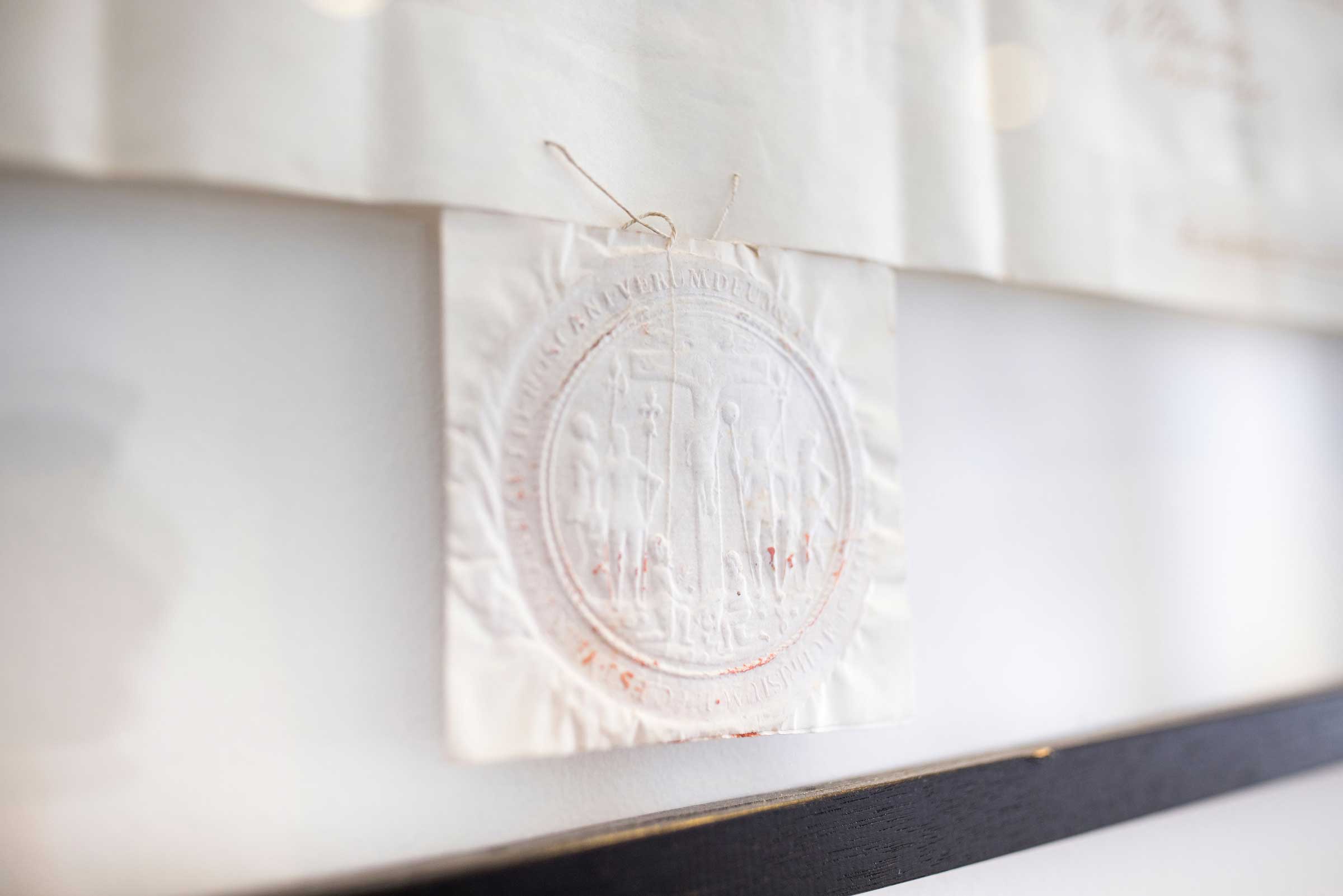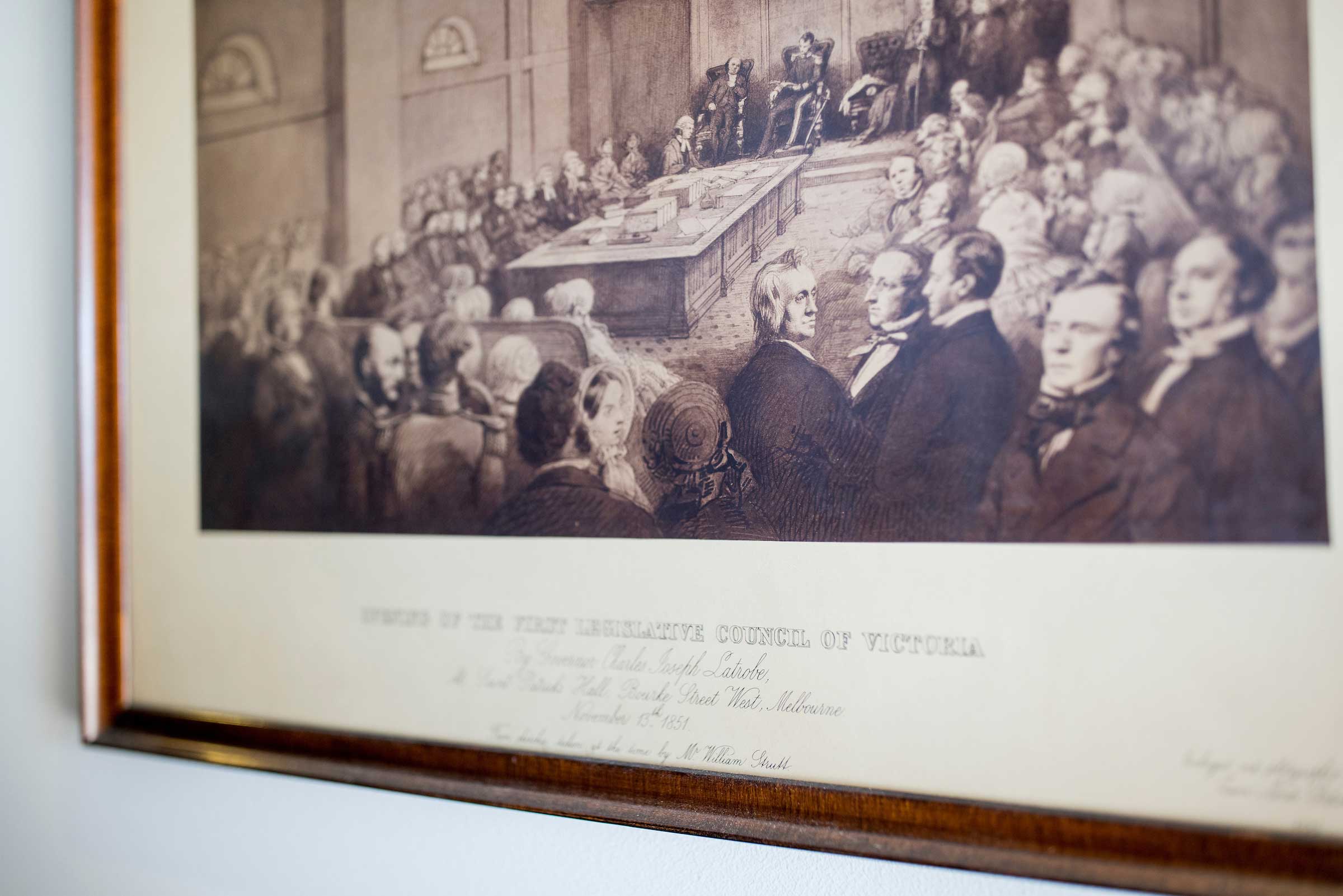
Our History
Aitken Partners was founded as Aitken Walker & Strachan in 1923 by Philip Aitken, Harold Walker and Ford Strachan. Philip Aitken was the father of 2nd generation partners Bob and Philip Aitken, uncle of Ford Strachan and grandfather of Robert Davey who is still with the firm today.
We have grown and merged with other firms including Rank & Robinson, Leach & Thompson, Melville & Melville, Hume Lawyers, BJT (Melbourne), John Matthies & Co and DSC Lawyers and continue to look for ways to expand our services and expertise. For us, standing still is not an option.
The ethos of the firm is reflected in its heritage and Aitken Partners remains committed to private clients as well as corporate clients. We have a significant number of rural clients, many of whose families have been clients of the firm since it was founded. We are justifiably proud of our history and will continue to build on it.
Guiding principles of integrity, respect and professionalism are as important to the firm today as they were 100 years ago, and have underpinned the growth of our firm now comprising more than 65 dedicated professional and support staff.

The Story of Aitken Walker & Strachan
Written by Robert R Aitken
The origins of the firm can be traced back through the firm of Whiting & Aitken to an earlier firm of Taylor Buckland & Gates which had offices in the latter part of the 19th century in both Geelong and Melbourne. Taylor Buckland & Gates acted for a number of pastoral families from the Western District and the Riverina, some of whose descendants are still clients of the firm today.
Taylor Buckland & Gates was established by Thomas H Taylor and Stephen Vine Buckland. Charles Edward Gates was admitted to the partnership after the death of Taylor on 24 October 1884. Buckland died on 27 October 1886, and Gates carried on the business in Geelong and Melbourne until 1 November 1889 when he took Joseph Henry Grey and Robert Selman Whiting into partnership.
Whiting was involved in the Melbourne office of the firm. He retired from the partnership on 25 June 1896 and took over the business of the Melbourne Office. James Aitken (uncle of Mr Philip and Mr Robert) was taken into partnership with him to start the firm Whiting & Aitken. RS Whiting owned the building at 101 William Street. He was entitled to 3/4 of the profit and James Aitken to 1/4.
Gates died on 3 May 1898 after which date Grey continued to run the firm until 25 April 1899 when he absconded leaving a huge deficiency in the firm’s trust account. He was later caught, charged and imprisoned (Article: https://trove.nla.gov.au/ndp/del/article/10554458).
Taylor Buckland & Gates managed the affairs of many Western District graziers. The partners acted as trustees of many estates and settlements and invested large sums of money on their behalf. Until 1896 there was no separate trust account. All trust funds, interest collections, etc passed through the firm’s bank account. A separate trust account was established in 1896. There may have been a deficiency of at least 10,000 at that time, and it seemed to be accepted that this was due to Grey’s activities. By 1899 this deficiency had increased by a further 20,000.
Sorting out the affairs of Taylor Buckland & Gates occupied a considerable amount of the time and attention of the Supreme Court in the early years of the century. Litigation took place between the receiver of Grey’s estate and the trustees of various estates and settlements as to who was entitled to such mortgages and securities as remained and as to the liability of outside trustees who had allowed Grey to manage investments without adequate enquiry as to what was being done. The old firm of Whiting & Aitken continued in respect of some business transactions until 1920 but a new firm had been started under the new name on 1 March 1912 with the admission of Henry J Whiting, Philip Lewis Aitken [father to Mr Philip and Mr Robert] and Charles Duncan Yuncken as partners.
James Aitken died on 15 February 1922 and CD Yuncken on 10 April 1923. The partnership of Whiting & Aitken was dissolved on 30 November 1923 with a division of the clients between RS & HJ Whiting on the one side and Philip Lewis Aitken on the other. Philip Aitken established his own business with his share of the practice taking as partners George Harold Walker and James Ford Strachan. The capital and profits were contributed and shared in the proportions 5.4.3. Harold Walker had previously been with the firm of Arthur Robinson & Co and was brought in to handle the company and commercial work. Ford Strachan had recently completed his law course and had been articled at and employed by Whiting and Aitken.

RS and HJ Whiting took the then Managers Clerk of the old firm WJ Byrne into partnership with them to assist with that part of the practise which they had taken over and thereafter adopted the firm name of Whiting and Byrne. They continued to occupy the old building at 101 William Street, Melbourne.
The firm of Aitken Walker and Strachan commenced business on the 1 December 1923 in offices situated on the first floor in St James’ Building at 115 William Street directly across from where the office is today. I have been told that on the preceding weekend, Mr Jim Kininmonth from Mt Hesse, brought down his utility truck which was used to move the records and old deed boxes up William Street from the offices at No. 101 retained by Whiting & Byrne. In those days, the titles and other documents held for various family clients were all packed together in tin boxes of varying shapes and sizes, and many old relics were subsequently discovered in those boxes when they were eventually disposed of.
The clientele of the new firm was in part made up of the Western District and Riverina pastoral families, many of whom are still clients. The first new client of the firm, Mr Lionel Weatherly was at school with Mr Philip Aitken, and gave his personal business to the new firm.
The move was made at the weekend. The story, possibly untrue or exaggerated, is that the Whiting’s did not generally put in an appearance at the weekend and as a result, when there was any doubt as to what should move from 101 to 115 William Street, the decision was generally in favour of AW&S. Members of some families remained with Whiting & Byrne while others came to Aitken Walker & Strachan and 30 years later the accounts for the original Ardachy Settlement were always prepared by Whiting & Byrne despite the fact that Mr Philip Aitken was a trustee of the settlement and the beneficiaries were clients of Aitken Walker & Strachan.
St James’ Building covered the whole block between Little Collins Street and Bourke Street as far west as Church Street. The property belonged to the Church of England. It was originally an adjunct to St James Old Cathedral which was just across Little Collins Street on the south side and was later moved to its present site opposite the Flagstaff Gardens. The building was intersected by a lane running from Bourke Street to Little Collins Street, and that part of building to the west of the lane was for the most part warehouses and storage rooms. The building was erected in 1885 under a building lease of 50 years. The builder got into financial difficulties and the building was taken over by the AMP Society which had provided the finance. The building lease expired in 1935; it was then renovated. A central entrance and lift were installed and the address of the firm changed to 123 William Street although the space occupied remained much the same.
The old building was 3 storeys high, having spacious rooms fronting William Street. The rooms to the back occupied by clerks and typing staff were dusty and unattractive. John Sanderson & Co, the shipping agents, occupied the Little Collins Street corner. Dennis Lascelles occupied part of the building and there were numerous wool buyers and other office suites. Two firms of wine and spirit merchants occupied the basements and overall there was a pervasive smell of wool spices and liquor throughout the building, particularly in hot weather.